Quiz: Ontario Traffic Signs 2
Practicing and studying the questions and answers are the keys to passing the Ontario G1 driving test. Take our free practice tests now.
ADVERTISEMENT
ADVERTISEMENT
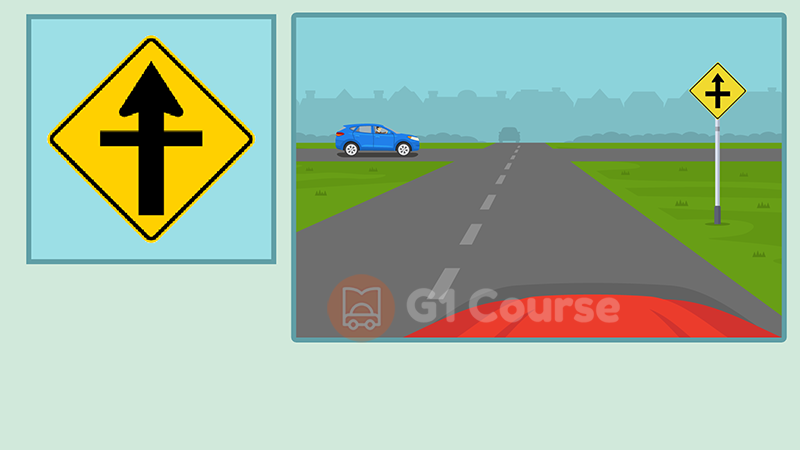
Intersection ahead
Merging traffic entering from right
Merging traffic entering from left
Free flow
Correct!
Wrong!
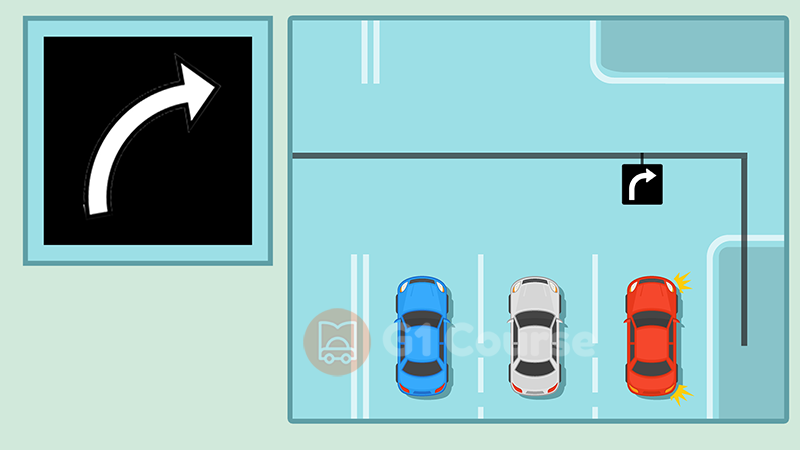
The driver in this lane must turn right
Yield the lane to oncoming traffic
Winding road ahead
Slight bend or curve in the road ahead
Correct!
Wrong!
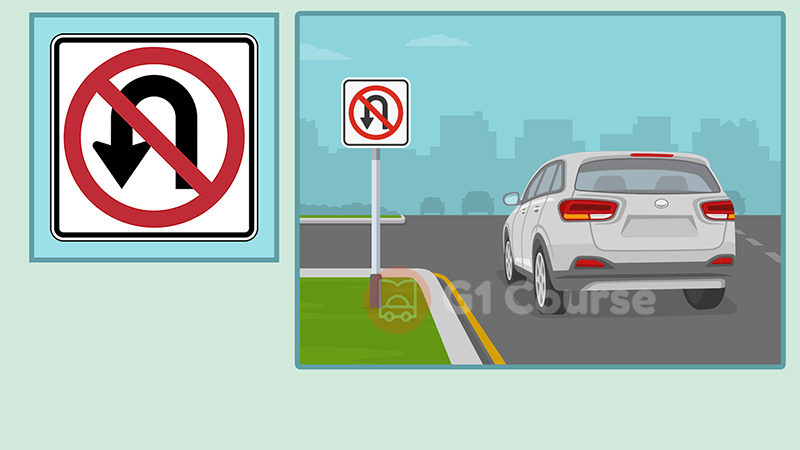
Do not turn to go in the opposite direction. (U-turn)
Right turn prohibited
Road slippery when wet
Left turn prohibited
Correct!
Wrong!
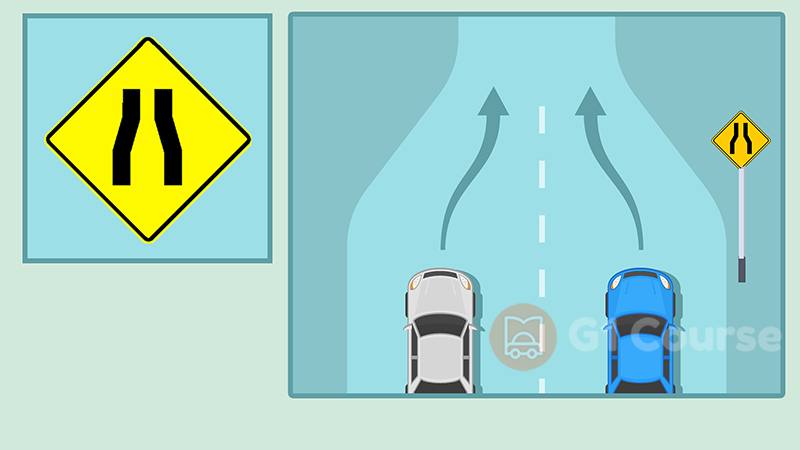
Pavement narrows ahead
Narrow bridge ahead
Right lane ends ahead
Winding road ahead
Correct!
Wrong!
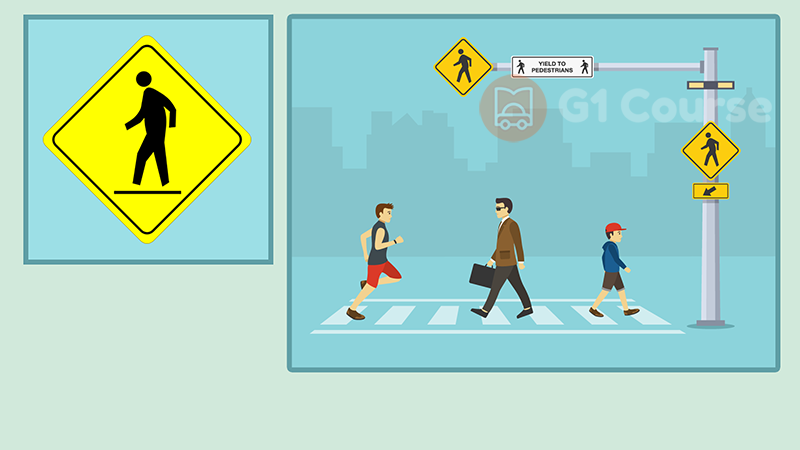
Watch for pedestrians and be prepared to share the road with them
School zone ahead
Pedestrian pathway only; vehicles prohibited
Pedestrians not permitted
Correct!
Wrong!
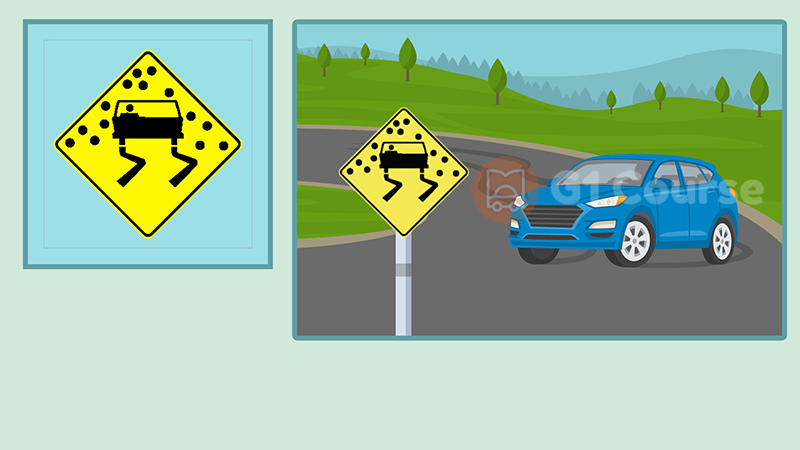
Pavement is slippery when wet
Bumpy road ahead
Winding road ahead
Sharp bend in the road
Correct!
Wrong!
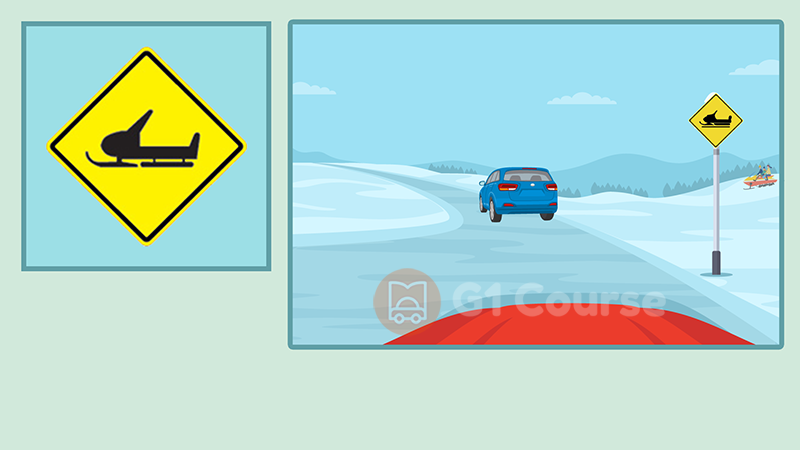
Snowmobiles cross this road
Snowmobile parking
Only snowmobile permitted
Snowmobiles prohibited
Correct!
Wrong!
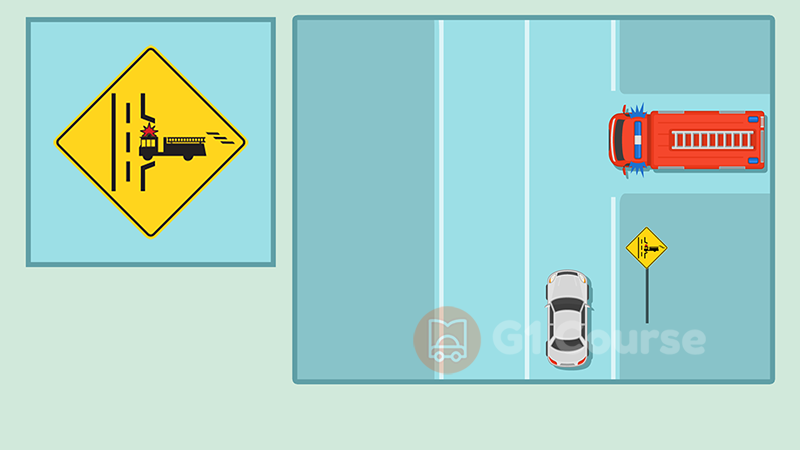
Indicates an upcoming fire truck entrance on the right, and vehicles should be prepared to yield to fire trucks entering the roadway
Narrow road ahead
Pass other traffic on the right
Fire truck parking ahead
Correct!
Wrong!
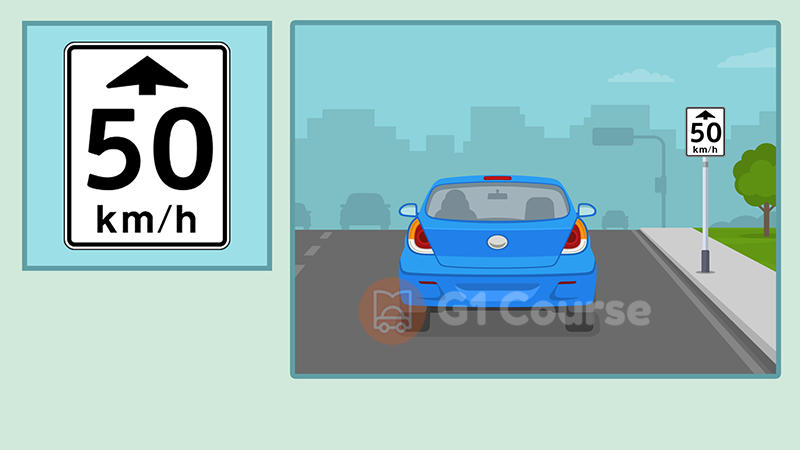
Speed limit changes ahead
Speed limit for rural school zones
Speed limit ends ahead
Pavement ends 50 feet ahead
Correct!
Wrong!
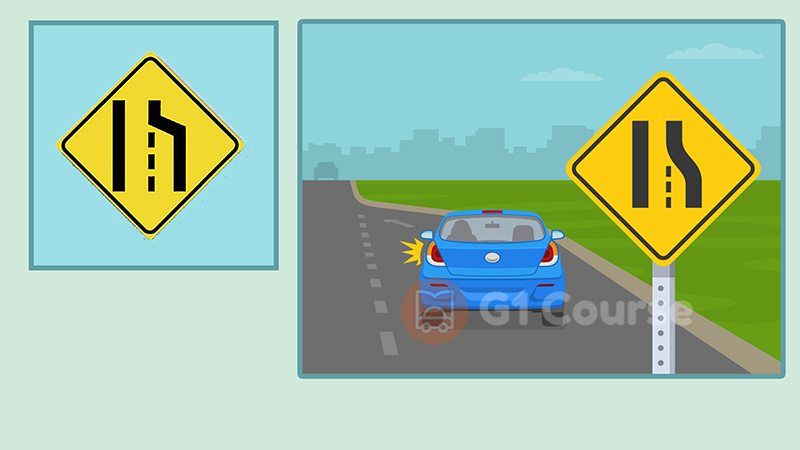
Right lane ends ahead
Hidden intersection ahead
Left lane ends ahead
Pedestrian Crossing
Correct!
Wrong!
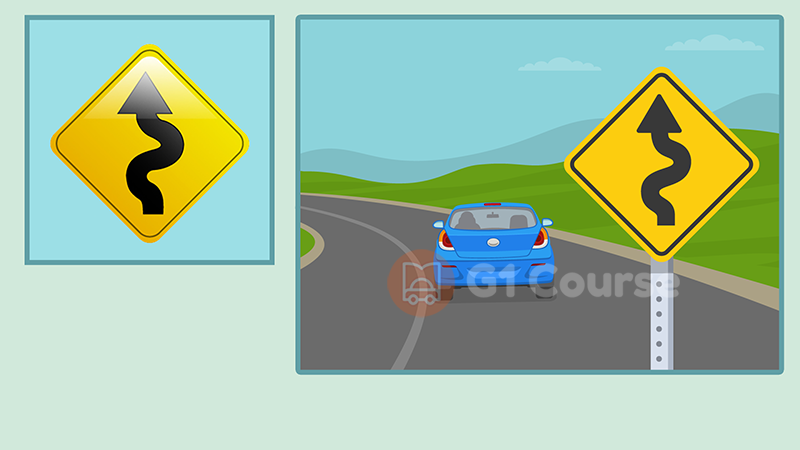
Winding road ahead
Crossroad
Bumpy road ahead
Sharp bend in the road
Correct!
Wrong!
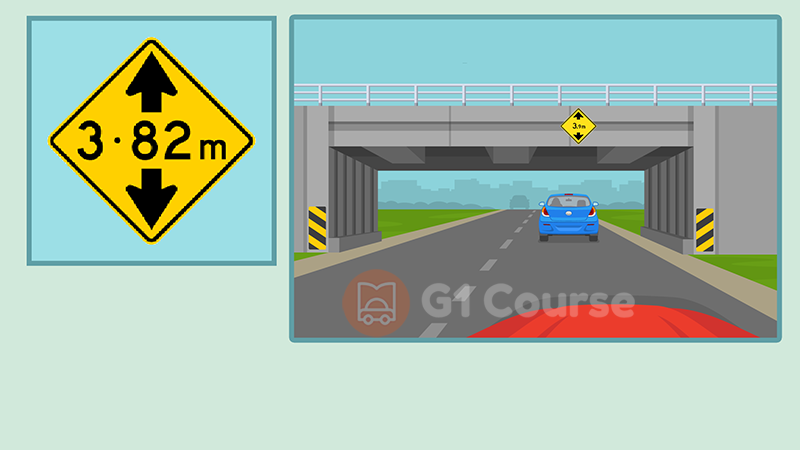
Underpass ahead. Take care if you are driving a tall vehicle
Speed Limit
Route Marker
Sharp Curve Ahead
Correct!
Wrong!
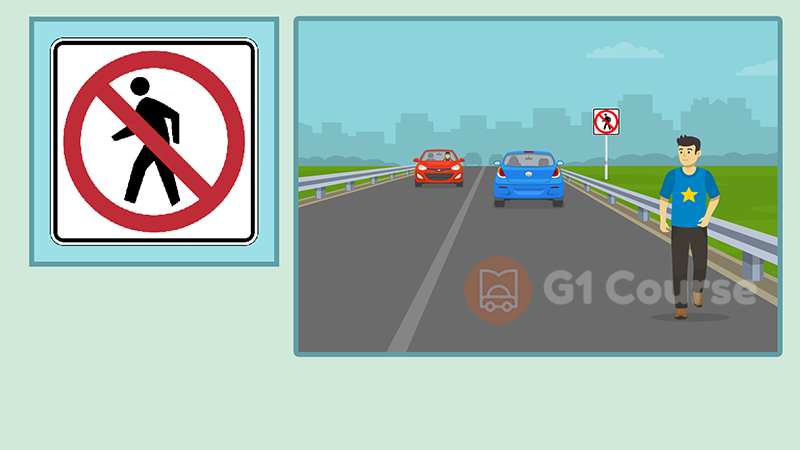
No pedestrians allowed on this road
Pedestrians only
You are entering a playground zone
School zone ends
Correct!
Wrong!
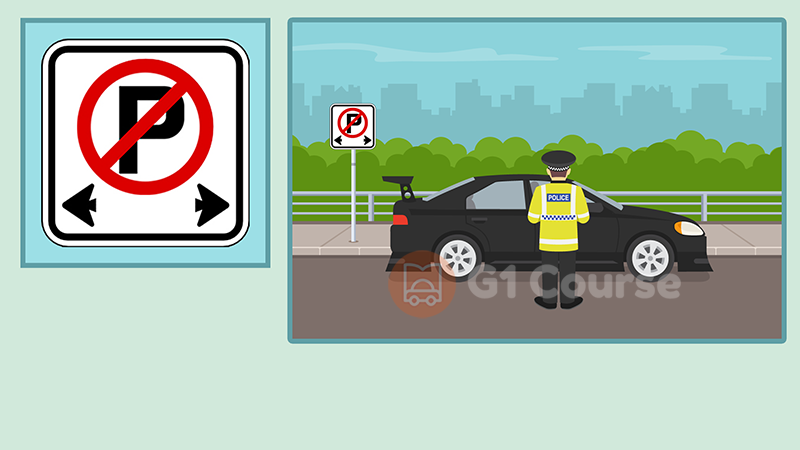
Do not park in the area between the signs
No stopping in the area between the sign
No entry into intersection
No passing in the area between the sign
Correct!
Wrong!
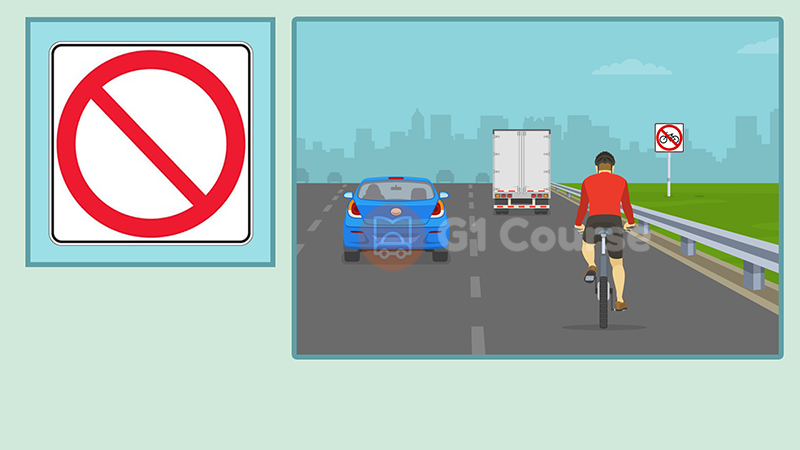
Prohibited sign
Do not pass
Parking is not permitted
Do not stop
Correct!
Wrong!
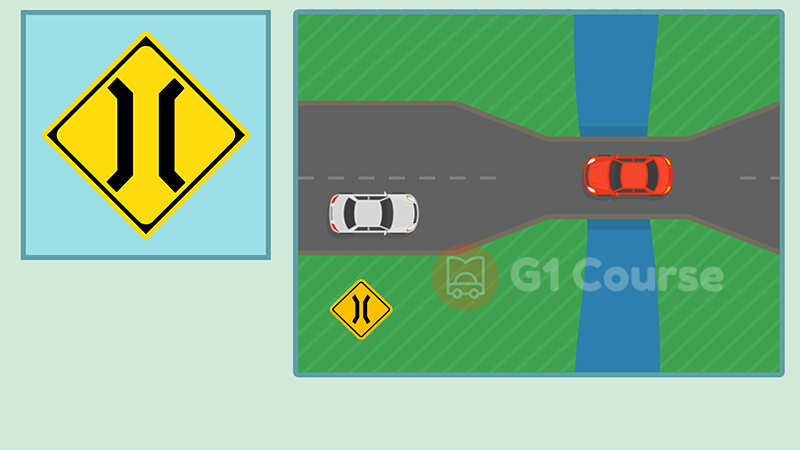
Narrow bridge ahead
Winding road
Dead end
Right lane ends ahead
Correct!
Wrong!
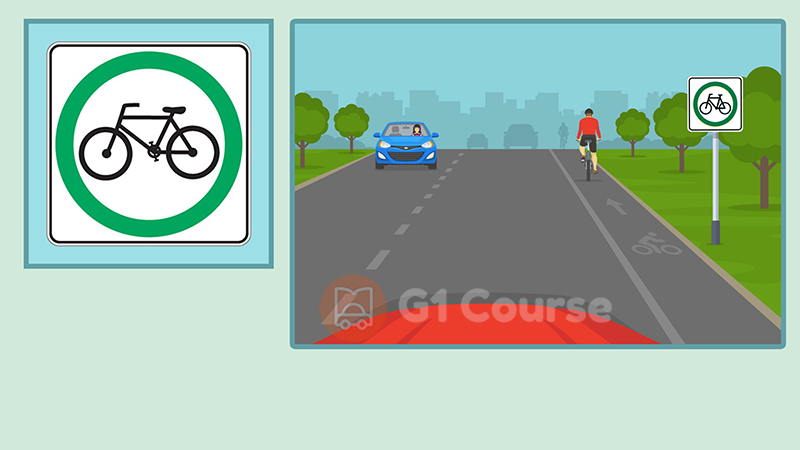
This road is an official bicycle route
Bicycle crossing ahead
Bicycles not permitted
Bicycle parking permitted
Correct!
Wrong!
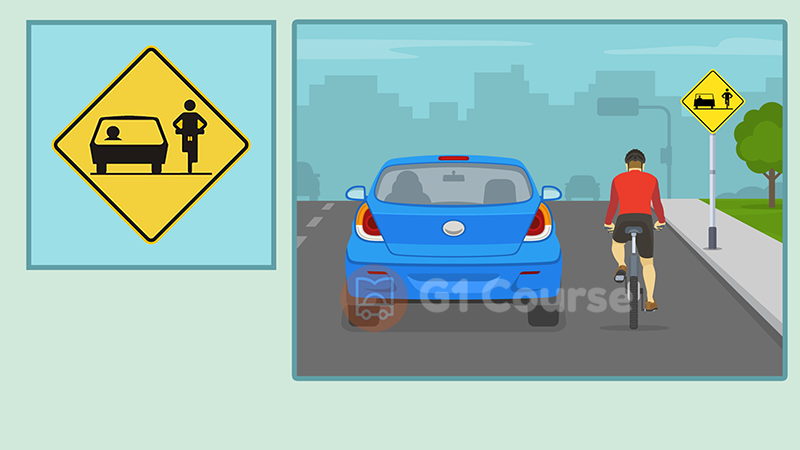
Warn motorists that they are to provide safe space on the road for cyclists and other vehicles
Bicycle parking
Bicycle not allowed
School zone ahead
Correct!
Wrong!
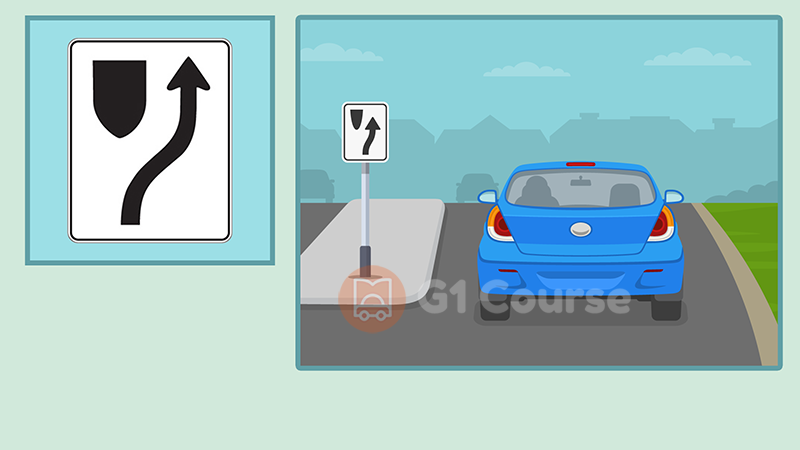
Keep to the right of the traffic island
Divided highway ends
Winding road ahead
Danger, road ends
Correct!
Wrong!
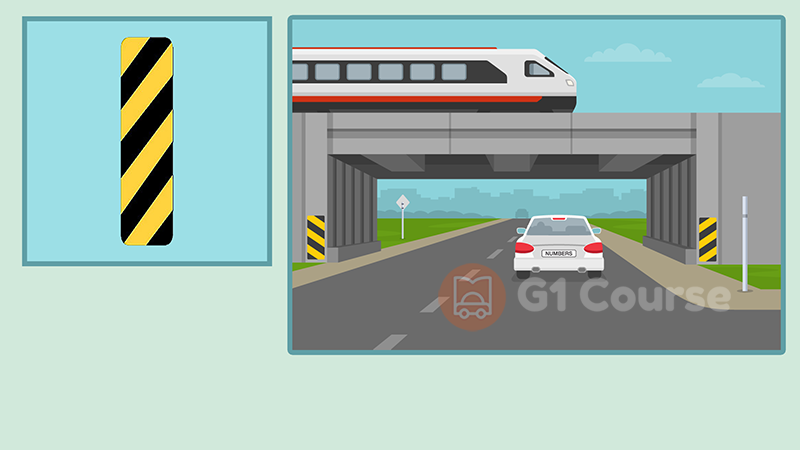
Hazard close to the edge of the road
Construction zone begins
Detour ahead
Lane ahead closed
Correct!
Wrong!
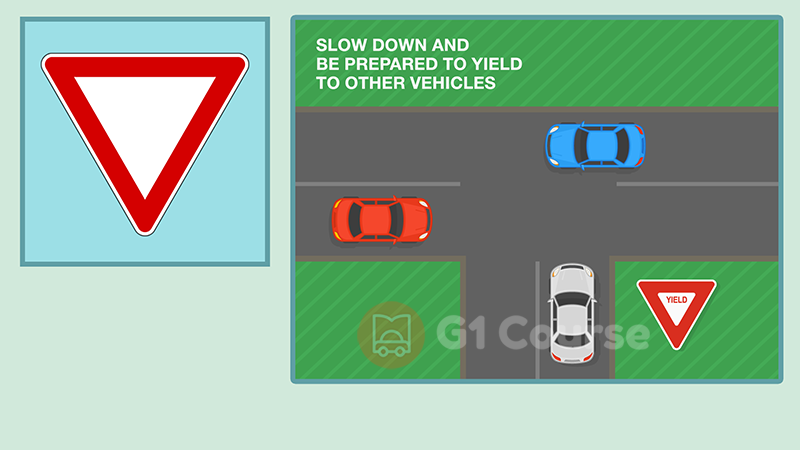
Yield right-of-way. You must let traffic in the intersection or close to it go first
Dead end street ahead
Slow moving vehicle ahead
Stop sign ahead. Slow down
Correct!
Wrong!
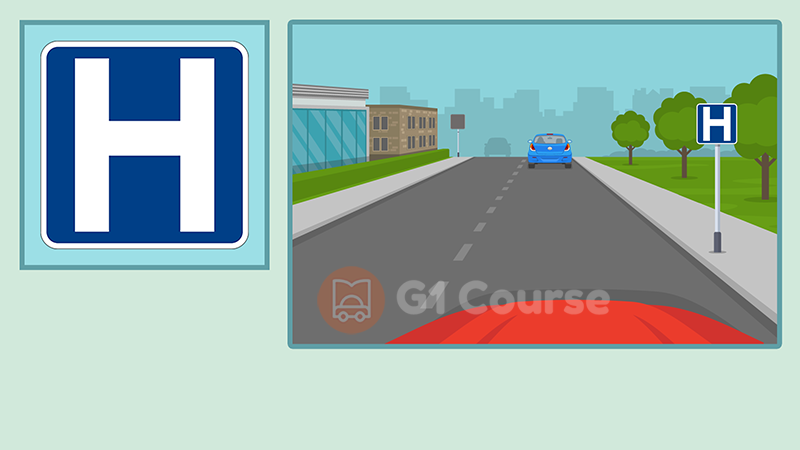
Off-road facilities – Hospital
Off-road facilities – Hotel
Off-road facilities – Hotspots
Crossroad
Correct!
Wrong!
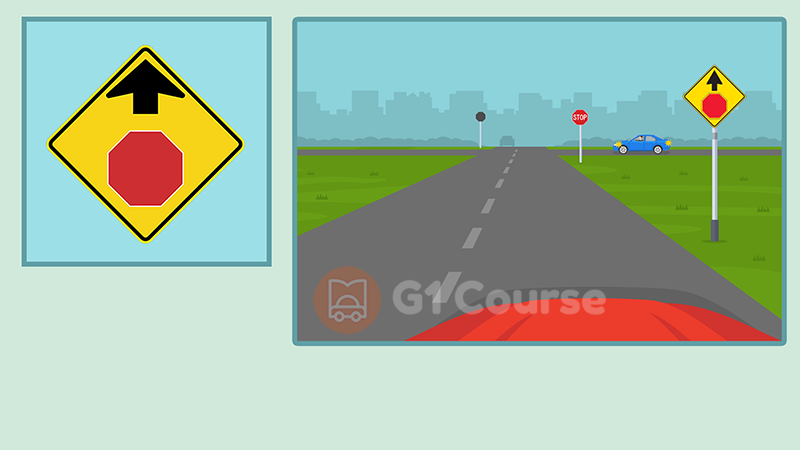
Stop sign ahead. Slow down
Slow moving vehicle ahead
Dead end street ahead
Yield right-of-way
Correct!
Wrong!
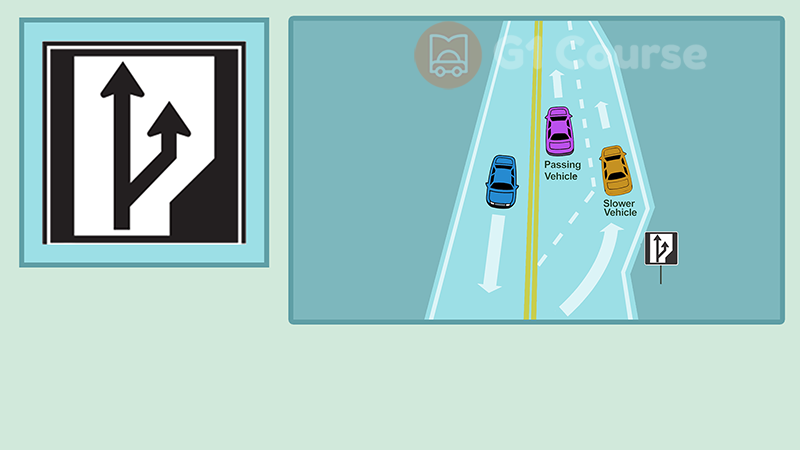
Keep to the right lane except when passing on two-lane sections where climbing or passing lanes are provided
Pass other traffic on the right
Winding road ahead
Road turns right, then left
Correct!
Wrong!
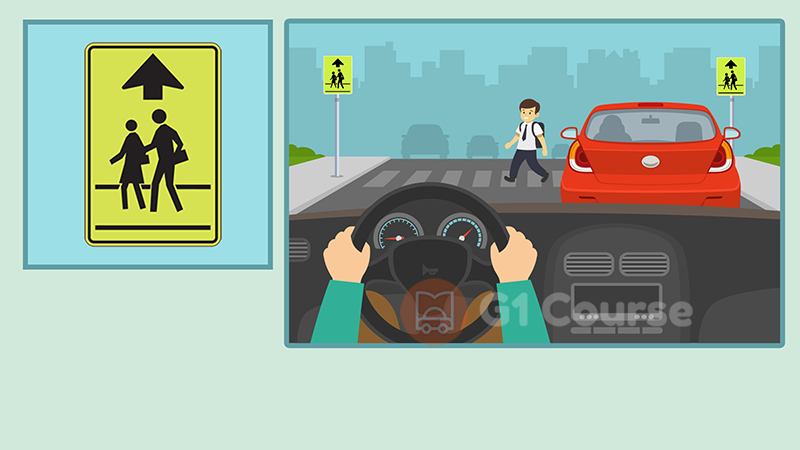
This sign warns of a school crossing
Direction sign for children
Pedestrian pathway only; vehicles prohibited
Children playing in residential area
Correct!
Wrong!
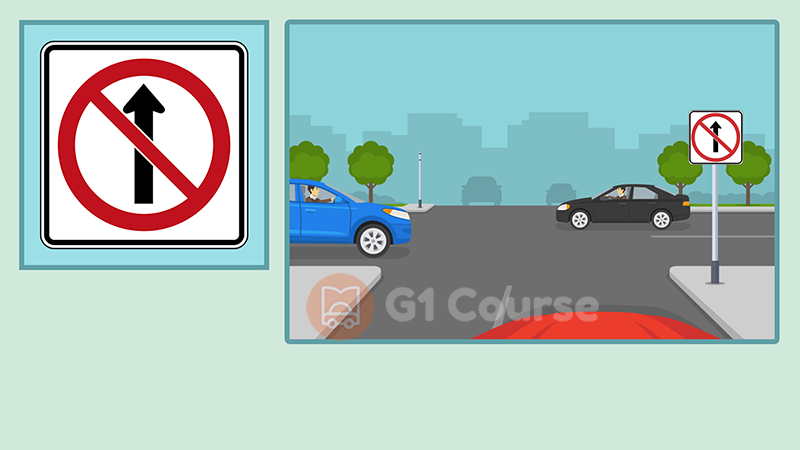
Do not drive through the intersection
Do not pass
Keep to the right of the traffic island
No parking ahead
Correct!
Wrong!
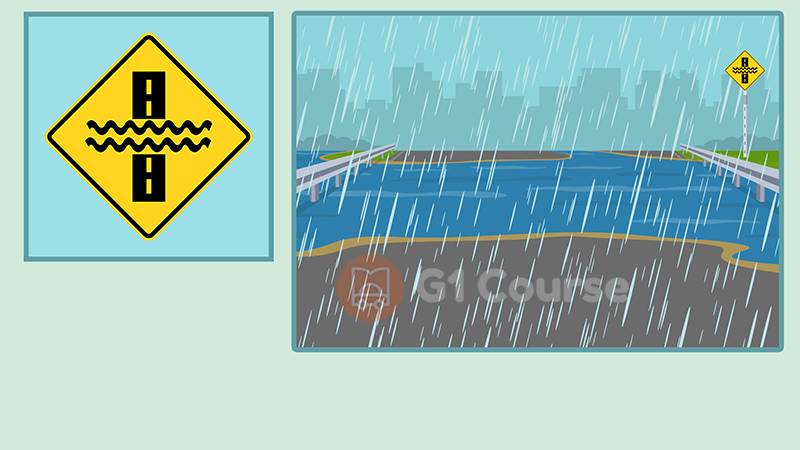
There may be water flowing over the road
Construction zone ahead
Mountainous zone ahead
Caution: Bridge Ahead
Correct!
Wrong!
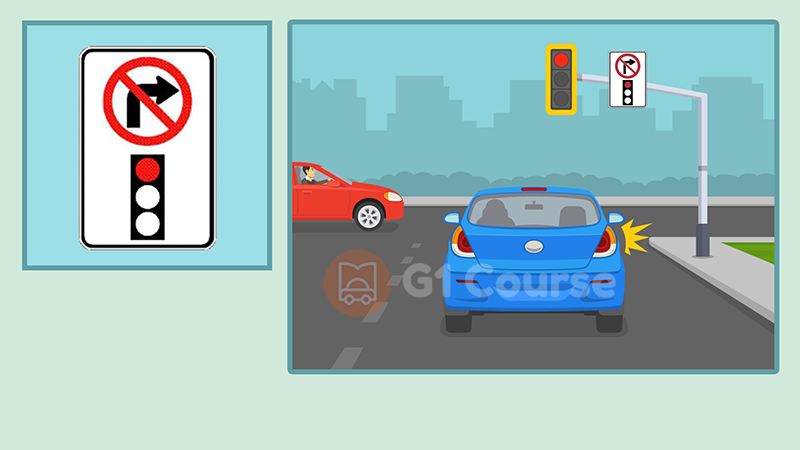
Do not turn right when facing a red light at the intersection
Traffic signal ahead
You may proceed through intersection, if clear
Do not drive through the intersection
Correct!
Wrong!
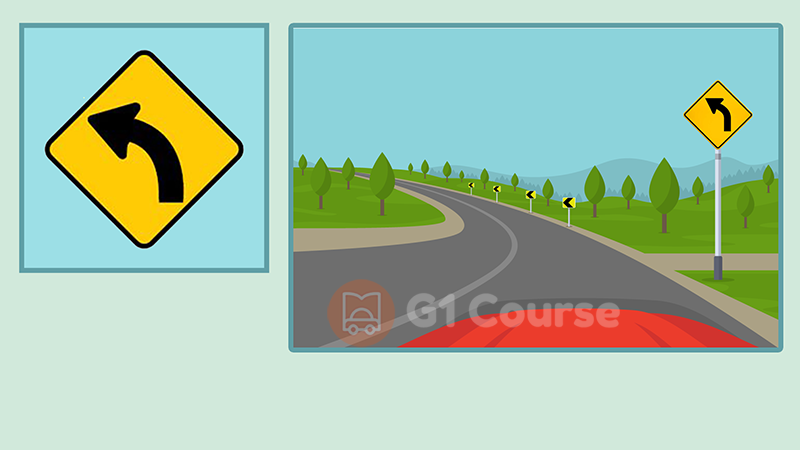
Slight bend or curve in the road ahead
Hidden road right
Narrow passage
No Right Turn
Correct!
Wrong!
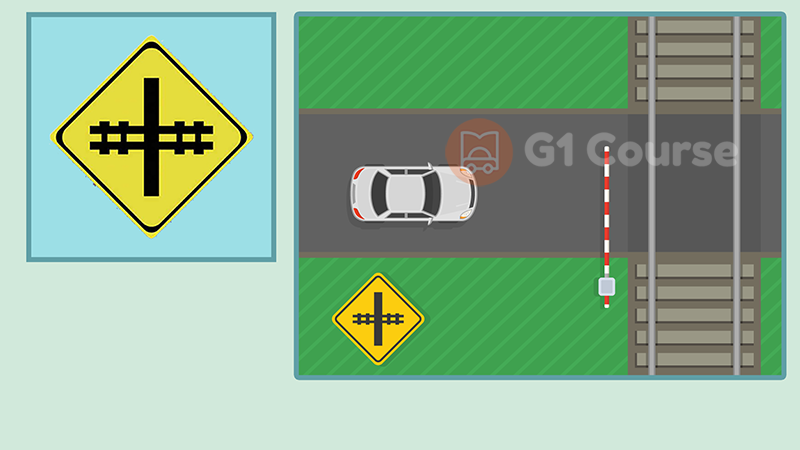
Railway crossing ahead. Be alert for trains
Crossroad
Bridge ahead
Hidden road right
Correct!
Wrong!
Share the quiz to show your results !
Subscribe to see your results
Signs 2
I got %%score%% of %%total%% right
%%description%%
%%description%%
More Learning Options:
Loading…
ADVERTISEMENT
